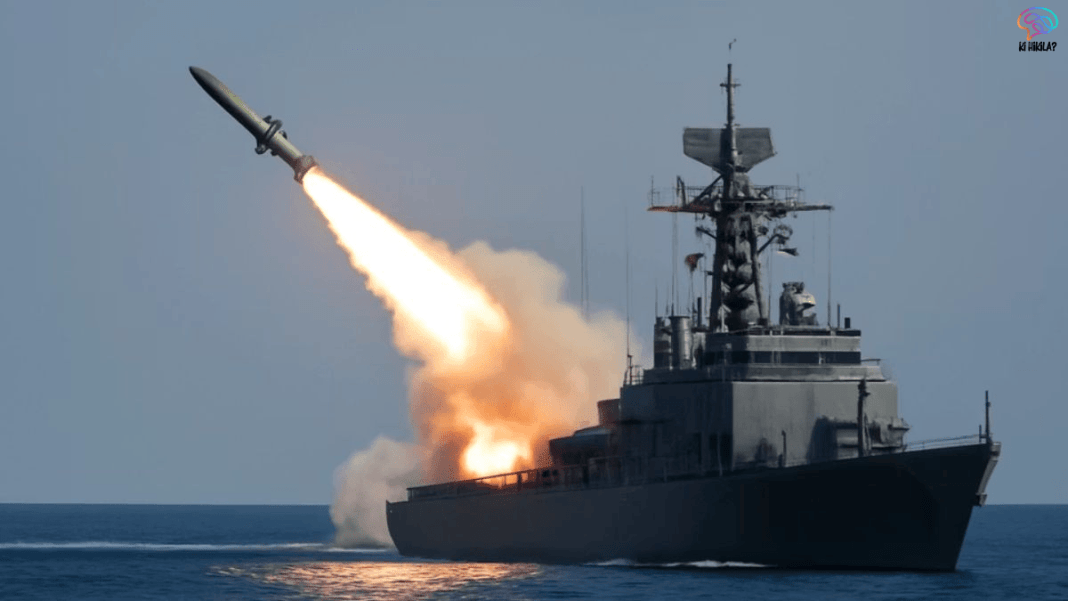Sustainable Power 1404, the name of Iran’s latest naval drill, has drawn international attention as a major display of maritime strength and resilience. Conducted in September 2025, this two-day exercise was Iran’s first large-scale military manoeuvre since its June 2025 conflict with Israel. The drills took place in the Gulf of Oman and the northern Indian Ocean, regions that are strategically vital for global shipping and regional security. By showcasing missile launches, coordinated warship deployments, and advanced defence systems, Iran aimed to send a clear message: it remains a significant maritime power despite recent military setbacks.
Context of the Exercise
The Sustainable Power 1404 drill came in the aftermath of a fierce 12-day conflict between Iran and Israel in June 2025. That war saw Israeli air strikes on Iranian nuclear sites and air defence systems, followed by Iranian retaliatory missile attacks on Israeli cities. Iran even attempted strikes on a US military base in Qatar, highlighting the risks of escalation in the region.
In this tense geopolitical climate, the naval drill was more than a routine exercise—it was a symbolic demonstration of recovery. By mobilising its navy and showcasing precision missile systems, Iran sought to re-establish deterrence and boost the confidence of both its military and population.
Objectives of Sustainable Power 1404
Iranian defence officials highlighted multiple goals for Sustainable Power 1404:
- Enhancing Combat Readiness: The exercises allowed Iran’s navy to test its preparedness for real-world conflict scenarios.
- Strengthening Command Coordination: Different branches of the armed forces worked together, demonstrating integrated warfare capabilities.
- Reinforcing Deterrence: By showcasing accurate missile strikes, Iran projected its ability to retaliate against potential adversaries.
- Restoring Image: After the June conflict, the drill was a bid to signal resilience and continued strength on the world stage.

The choice of the name Sustainable Power 1404 itself underscores Iran’s narrative of long-term endurance and military sustainability, with “1404” referencing the Persian calendar year.
Components and Deployment
The naval drill included an extensive range of military assets. Surface warships, submarines, air units, and electronic warfare brigades all participated. Among the highlights:
- Frigate IRIS Sabalan and vessel IRIS Ganaveh fired Nasir and Qadir cruise missiles at sea-based targets.
- Electronic warfare teams tested jamming and anti-radar measures.
- Air defence systems simulated counter-attacks against aerial threats.
- Subsurface operations showcased stealth and anti-submarine capabilities.
These elements illustrated Iran’s shift towards more complex, integrated military exercises. The precision of the missile strikes, which successfully hit simulated sea targets, was presented as proof of Iran’s growing maritime strength.
Geopolitical Implications
The Sustainable Power 1404 exercise must be seen in the larger geopolitical context of West Asia. The drills came just weeks after Israel conducted its own military exercises, simulating attacks on Iranian nuclear facilities. By holding large-scale manoeuvres, Iran effectively issued a warning: it retains both the intent and capacity to respond forcefully to external threats.
The location of the drills—the Gulf of Oman and the northern Indian Ocean—adds another layer of strategic significance. These waters are vital shipping corridors for global oil and energy trade. Iran’s decision to stage exercises here demonstrates its intent to project power beyond the Persian Gulf and assert influence over international maritime routes.
Military Readiness and Internal Significance
Beyond the geopolitical symbolism, Sustainable Power 1404 also aimed at strengthening Iran’s domestic narrative. By staging large-scale coordinated drills, the government sought to:
- Boost Morale: Reassure the Iranian public and military rank-and-file of their nation’s resilience.
- Demonstrate Integration: Show that Iran’s navy, air force, and electronic warfare units can operate together effectively.
- Project Stability: Highlight the country’s ability to recover quickly from recent losses and maintain operational readiness.
For Iran’s leadership, such exercises also serve as propaganda tools, reinforcing claims of self-reliance and regional dominance.
Regional Security Outlook
The Sustainable Power 1404 drill is likely to influence how regional states perceive their own naval preparedness. Countries in the Gulf Cooperation Council (GCC), along with Israel and the United States, will closely analyse the capabilities displayed. The demonstration of long-range missile strikes and electronic warfare tactics could encourage neighbouring states to bolster their maritime defences and alliances.

At the same time, the exercise raises questions about stability in already volatile waters. The Gulf of Oman and northern Indian Ocean are vital for energy supplies to Asia, Africa, and Europe. Any escalation in military posturing risks disrupting global shipping and trade.
Conclusion
Sustainable Power 1404 was more than a military drill—it was a statement of intent. By conducting its first major exercise since the June 2025 war with Israel, Iran signalled resilience, deterrence, and its continued role as a regional power. The participation of advanced naval vessels, missile launches, and electronic warfare units underscored Tehran’s determination to assert maritime strength.
While the exercise may reassure Iran’s leadership and armed forces, it also heightens tensions in an already fragile region. As rivals respond, the Gulf of Oman and Indian Ocean could become focal points of naval competition. For now, Sustainable Power 1404 has placed Iran firmly back in the spotlight of global security discussions.




